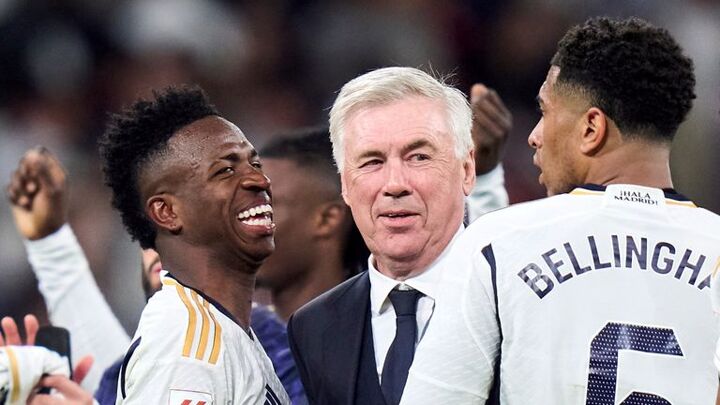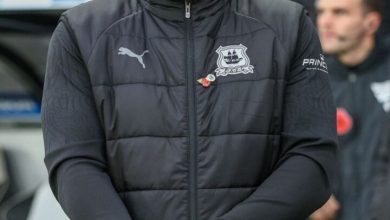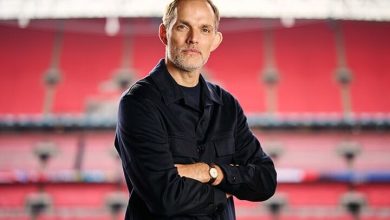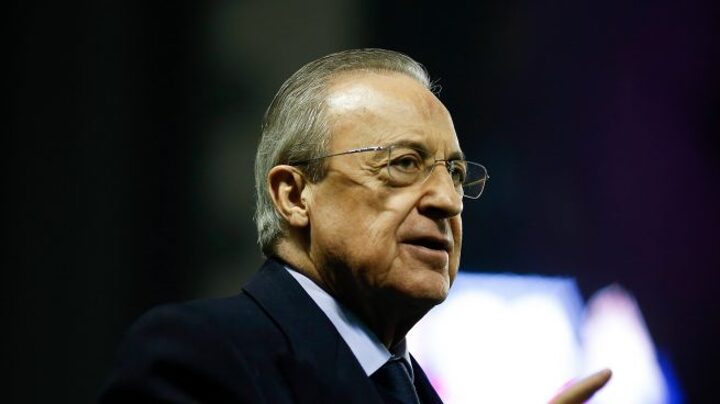Sport
Ancelotti’s Real Madrid among those consulting Minute9 in search of an edge

Carlo Ancelotti has won the Champions League five times as a coach, more than anyone else, but he is still willing to learn. He recently spent more than seven hours at a boutique sports communications firm, talking him through the science of the team's halftime talk.
That Eamon Devlin, founder of Minute9, and his team of four data analysts have delivered a number of workshops to Real Madrid, the reigning champions of Europe, is in itself probably an indication that football has yet to find the best way to make use of what there is. certainly the most important 15 minutes of the coaching week.
“People won't look for a solution unless they think it's a problem,” Devlin told Sky Sports. And yet this is a sport that can be skeptical of new ideas, especially from outsiders. “There may be some reluctance. But the top coaches always find time to learn, especially those based in continental Europe.”
How did an Irish lawyer turned Gaelic football coach come to give insight into team conversations to the most successful manager in the history of European football? It's a story that started while she was living in Switzerland, when Devlin's daughter Zoe went on a nine-minute rant from her coach.
She was 10 years old.
“That was it for her,” Devlin told Sky Sports. “She just left the team and hasn't come back. That's why we called the company Minute9.” It's just one little anecdote, but Devlin has heard many since. “Where do I start? Everyone in sports has their own halftime story.”
There are stories to tell. There's one about the player being ordered to take off his shirt before the manager tramples on it, to illustrate that his opponent has walked over him. How about the player who had the courage to leave the field with an injury.
“The manager came in and walked right up to him, grabbed the ice pack, threw it at the guy and asked him if he was getting soft.” Horror story or motivation tool? Devlin sees all this as evidence that managers are failing to fully recognize what really works.
It's now almost 30 years since John Sitton's infamous half-time team speech was caught on camera, with the Leyton Orient boss offering up one of his players with the expletive-riddled addendum that he should 'bring his food' – but Sitton wasn't the only voice.
“What happens is that when teams lose, the trend is for coaches to talk more. We would tell them to talk less. Players' brains are on fire. They know very well when they are getting battered. They probably don't have anyone necessary.” to tell them that.”
For personal reasons, Devlin, 46, switched from law to psychology and chose the topic of the halftime team lecture for his dissertation, but found that the literature on the subject was limited. “There were only nine published articles in the world, from all sports.”
He is now pursuing a PhD on the subject at Leeds Beckett University – 'the first in the world in football halftime' – his research includes interviews with former Arsenal manager Arsene Wenger and England World Cup-winning coach Sir Clive Woodward . others.
“I interviewed coaches in America and Australia, expanded the research to other sports, but similar themes kept coming back. The results weren't good. Players just weren't overly enthusiastic about what they heard at half-time.” It was a missed opportunity.
“The psychological themes accounted for about 60 percent. The message was basically 'work harder'. And we should be doing emotionally charged things, but in professional football if you do that twice a week it loses its impact.
“We kind of realized that there's a pretty big gap between what players want to happen and what coaches want to happen. Players don't get factual information. Coaches don't get involvement. That's not ideal because you could say that This is the crucial moment.” .”
Making those precious minutes as impactful as possible is the key. Devlin has found that some sports do this better than others, citing basketball coaches and boxing trainers as the most effective ways to get their message across efficiently.
“In boxing there are eleven 'rest periods', but there is no time to hesitate. There is a very famous boxing trainer in Ireland called Billy Walsh who explained to me that an Olympic boxer's heart rate is between 85 and 100 percent . of the maximum for the entire fight.
“That's basically an eleven-minute sprint – three laps and two one-minute breaks. How do you communicate with someone who is literally trying to survive? A hand on the shoulder can lower the heart rate quite quickly. They have learned to be concise and clear.”
Devlin cannot name most Minute9 clients and doesn't want to give away all the secrets, saving them for the longer-term workshops and team communications assignments, but that is the key message for all football managers. “Basically we're trying to make teams more effective by shortening those 900 seconds.”
The average halftime speech lasts five minutes and thirty seconds. Devlin tries to reduce that to just 60 seconds. “What we're seeing is coaches are losing people just by overloading them with information. And players are just going crazy. We're trying to make sure they're present and willing to listen.”
He adds: “First of all, we try to make sure that once players have landed after the half-time whistle, that they have actually calmed down. We develop strategies to help players as they can be extremely anxious. You're unlikely to listen right away. of tension.”
Devlin even looked beyond sports for inspiration. “The hospital staff in the emergency department has to deal with twenty people coming in at the same time and there are protocols for that. We also studied air traffic controllers because they have to make complex decisions,” he explains.
“That's an extremely high-pressure environment. Air traffic controllers wouldn't see the end of their shift if they started shouting profanities at pilots in the sky. Your best chance of getting your message across is to be calm and concise .”
Being heard helps. “One of the challenges in football is that they have very large coaching teams.” Devlin mentions one Premier League team with 28 staff in the venue for away matches. “One of the first things we try to determine is who exactly is in the locker room,” he says.
“We have had a chairman there, board members, sports directors, sponsors, people who had shirts signed, shareholders, bankers. People say it doesn't matter because they don't say anything, but that doesn't mean they don't communicate.
“The challenge is the power dynamics in that room. Players wonder who's in charge. Once they think that, you've lost their attention. Keep it simple. In general, just try to clear the room. It gives managers more of an opportunity that people are listening.”
One piece of information clearly provided works better than half a dozen. “The long and short of the problem is too much information. If you overload the brain with information, it just gives up.” And sometimes that information may not even need to be spoken.
Some people learn better with visual aids. “It's about finding ways to convey messages without using words.” And that has never been more important in a globalized game. “It's like the United Nations in these rooms. You have to change your method of communication and go beyond one long speech in a single language.”
So far so sensible. But some of Devlin's insights are a little counterintuitive. For example, despite discouraging shouting at the players, his research has suggested that there can be too much positive communication. It must have a real meaning.
“Just saying 'well done' can be seen by Generation Z as a form of control. That's me, the old bald man, judging you. The other problem with 'well done' is that you've just played 45 minutes of football and 300 decisions. Which part did you do well?
Ensuring the feedback is specific is likely to have a greater impact. “A better way might be to say that I noticed that you have been doing your work in the gym and that has helped you make a certain number of attacking runs into the penalty area,” he added.
“That way you not only notice what they've done, but you also highlight what they've done well. That's why they can try to repeat it, right? Offensive runs are good, that's why they'll try to do more of them. say a simplified version, but you get the point.”
Perhaps most surprising of all is that Devlin is open to the idea of players being able to use their cell phones during halftime. While checking social media is probably unwise, making sure loved ones are safe can be reassuring.
“Coaches may block phone use for the right reasons, but when I get stressed, I scroll on my phone,” he explains. “I get quite nervous if I don't control it. That's my way of dealing with stress and I don't think I'm the only person in the world who does that.”
It's an intriguing thought, and Devlin himself doesn't claim to have all the answers. But in a sport where everyone is looking for an edge, it is perhaps inevitable that new approaches to that precious interval will be discussed by forward-thinking people, including Ancelotti.
Ultimately, the coach's skill remains paramount. “The best coaches have several records to play at halftime. They may have a collection of at least six records, ideally more, and it's all about playing the right one at the right time,” says Devlin.
Still an art. But there is also science behind the team discussion during halftime.








